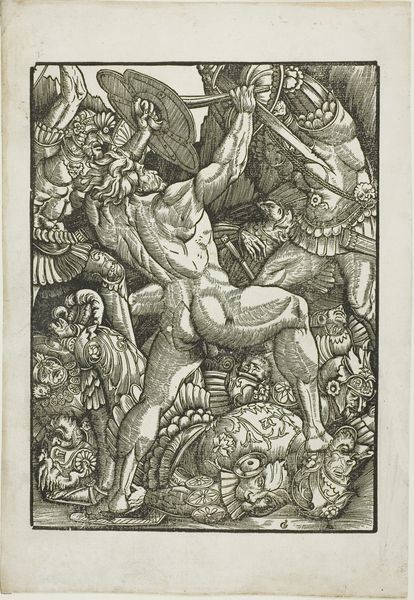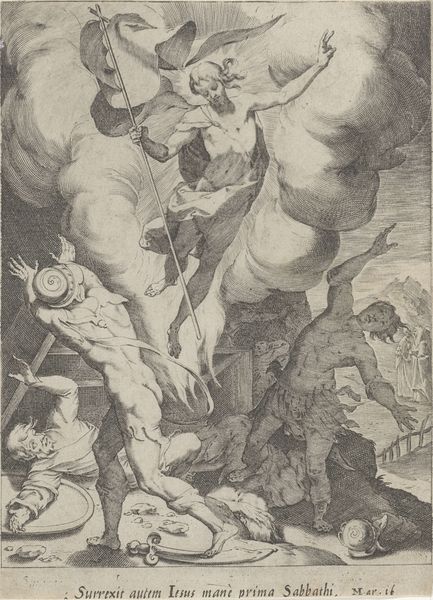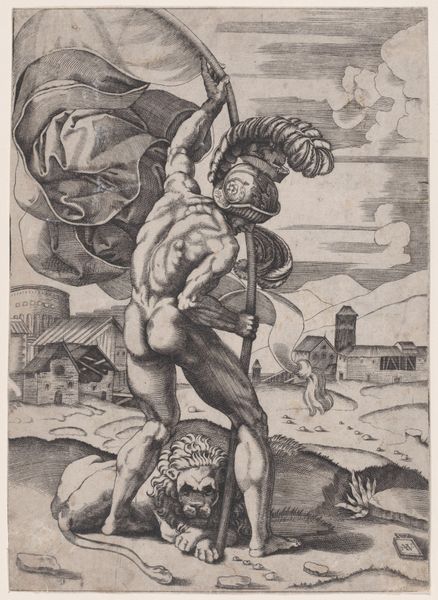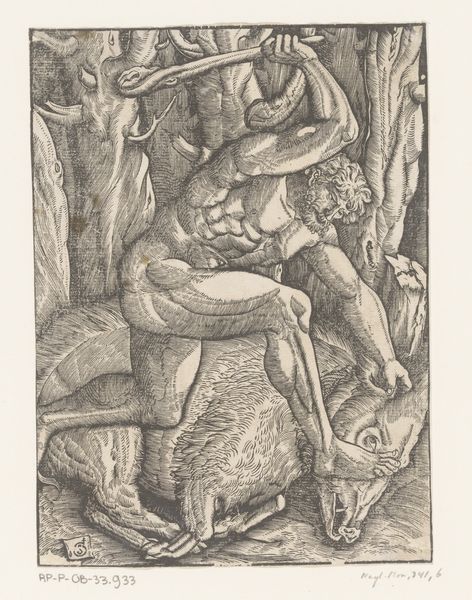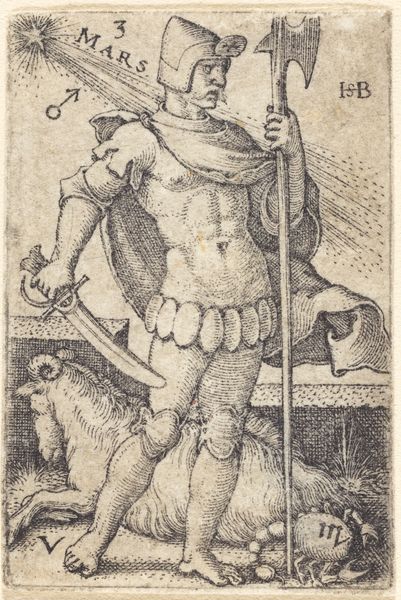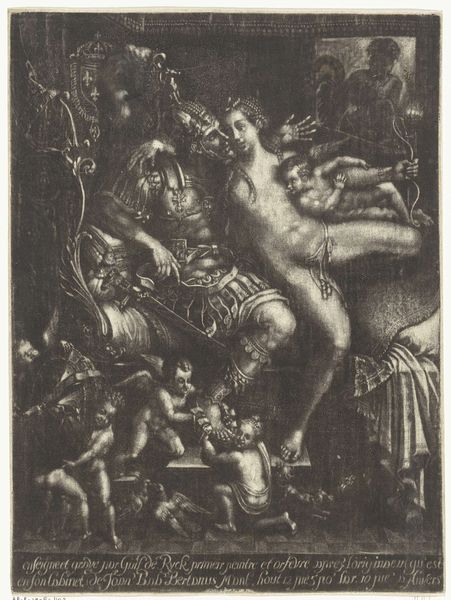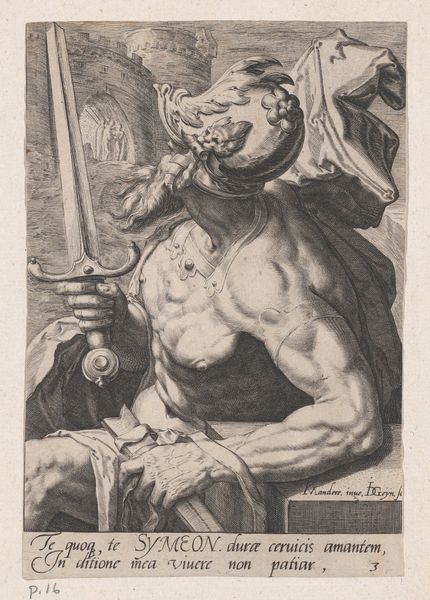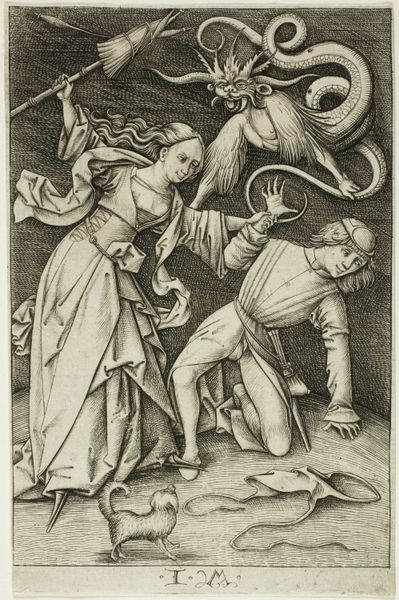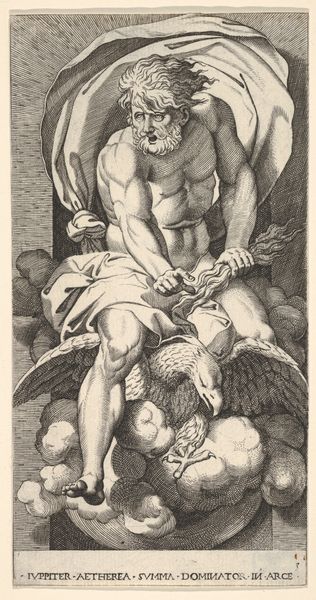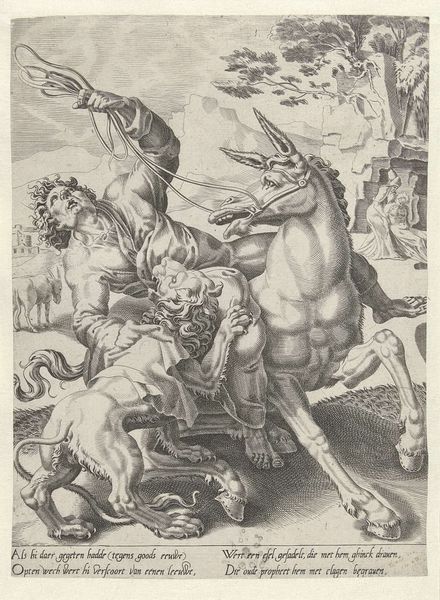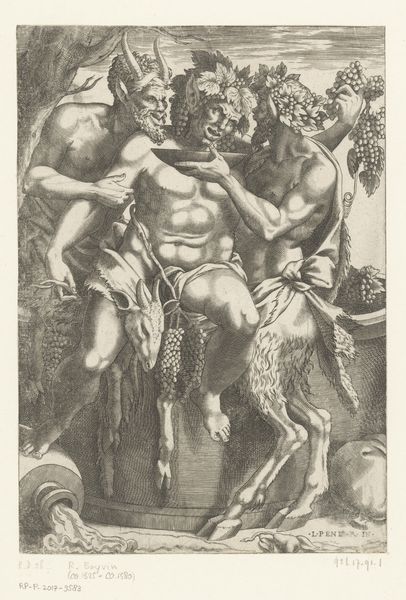
print, engraving
#
allegory
# print
#
mannerism
#
figuration
#
history-painting
#
nude
#
engraving
Dimensions: height 291 mm, width 230 mm
Copyright: Rijks Museum: Open Domain
Curator: Today, we're examining a Mannerist print titled "Allegory of Time and Fortune," created sometime between 1520 and 1562 by the artist known only as Monogrammist AC. It's currently held here at the Rijksmuseum. Editor: Right away, I'm struck by how…unsettled it feels. All that swirling, turbulent energy – like trying to grab smoke, isn’t it? Curator: Precisely. Note the contorted poses, the almost excessive musculature. The entire composition strains against any sense of classical harmony. The figures themselves serve as symbolic devices. Observe how Fortune is presented nude, precariously balanced atop a sphere, which signals her instability and changeability. Time, often depicted as an old man, is shown beating a drum beneath her, relentlessly marking the passage of moments. Editor: That relentless rhythm! It feels claustrophobic. And all those odd little winged creatures and unsettling objects strewn about… What is the significance of this all? Curator: They function as semiotic markers. For example, a broken stringed instrument suggests fleeting pleasures, and serves as a commentary on earthly ambition. The composition guides us to consider temporality against mutability. The figures don't just exist, they communicate meaning through gestures, placements, and attributes. The style itself amplifies these concepts. It's meant to disorient the viewer from stable reference points and offer commentary on transience and flux. Editor: So, the artist is making a statement that's essentially a sigh, or a shudder. Not so much a painting, as an emotional weather report about trying to navigate life's uncertainties. What lingers most is the image's capacity to capture the mood of life's fragile balance. Curator: An insightful conclusion! By analyzing the formal components and contextualizing them within the visual language of Mannerism, we unveil layers of symbolism. Editor: Yes, and for me, that visual analysis confirms the raw emotional data. In all the clamoring visuals, there is something profoundly humane.
Comments
No comments
Be the first to comment and join the conversation on the ultimate creative platform.
